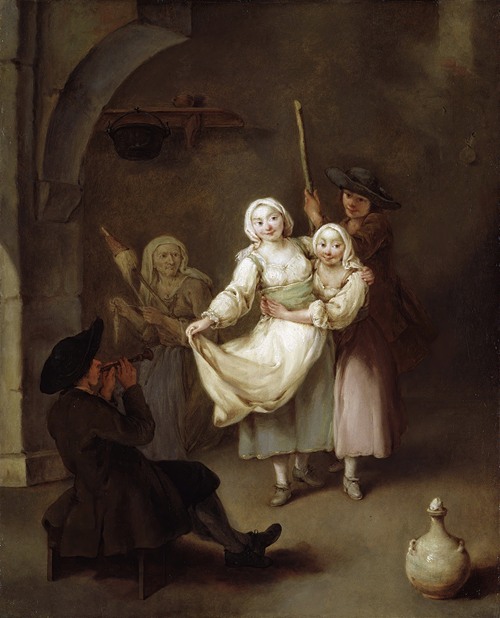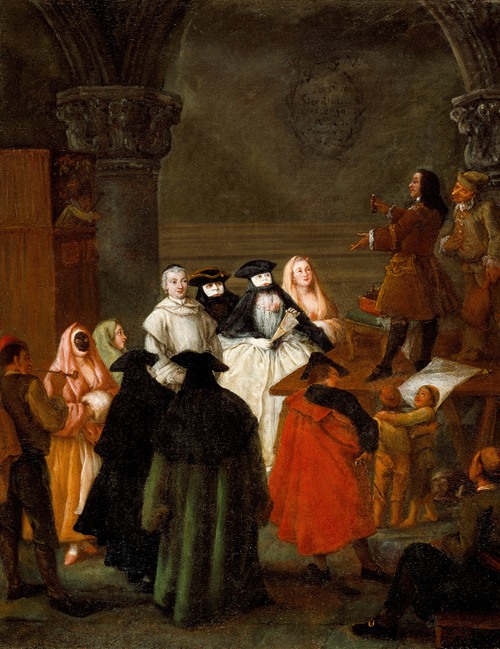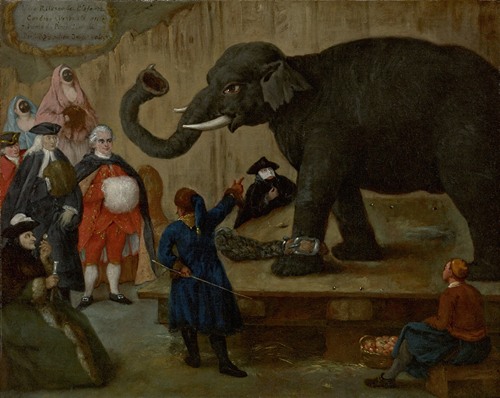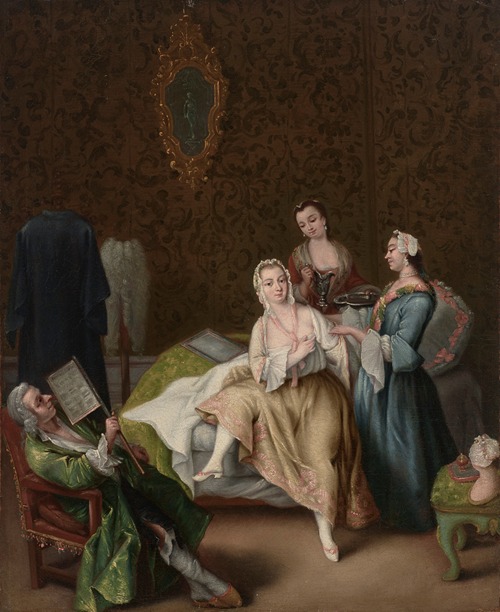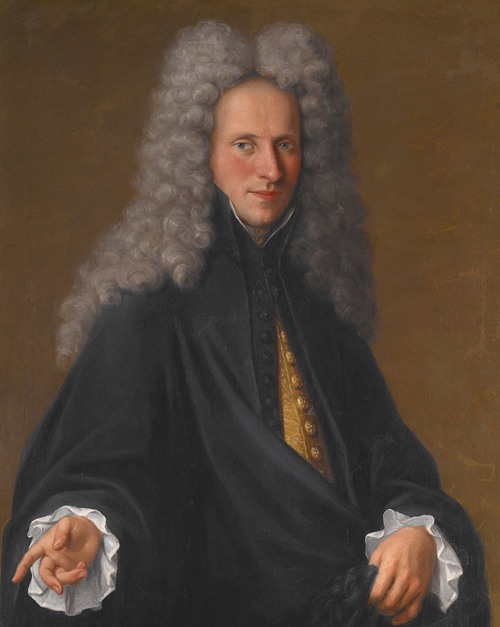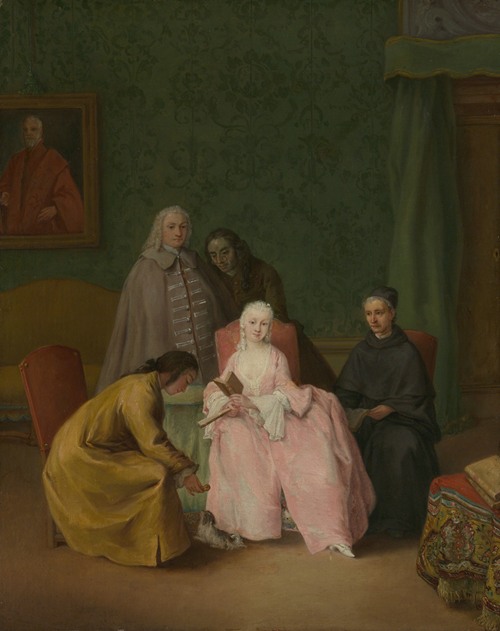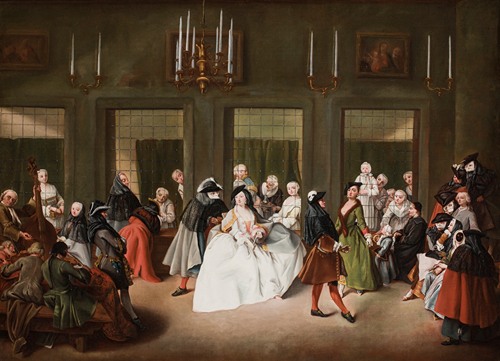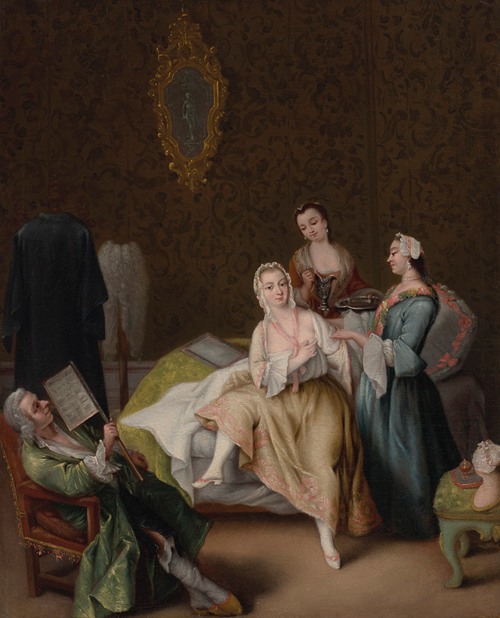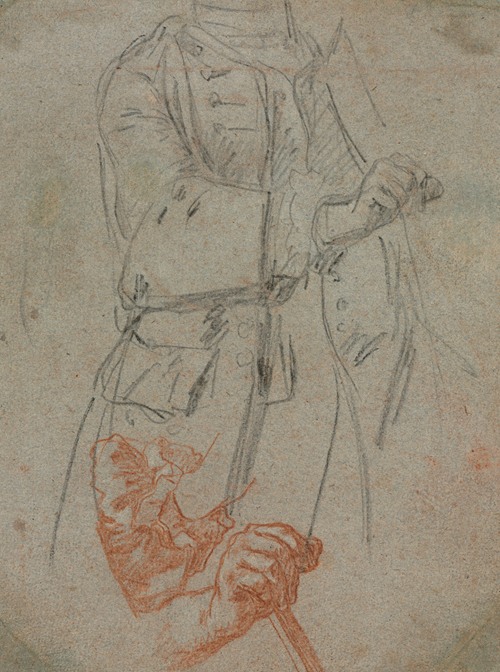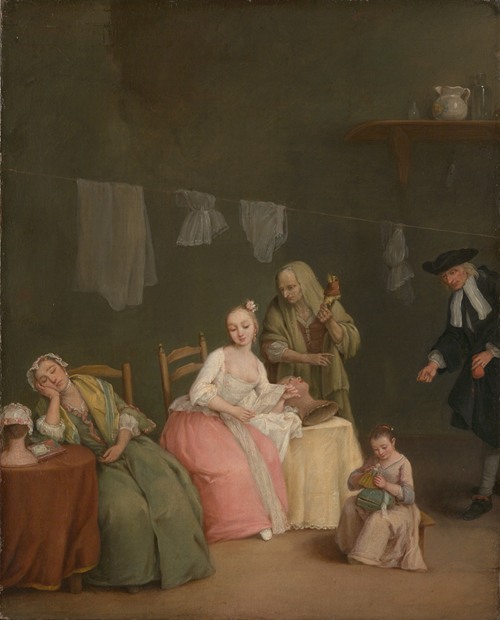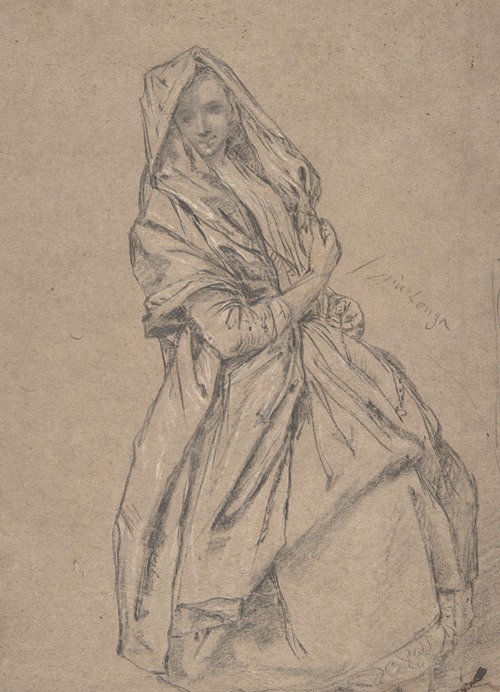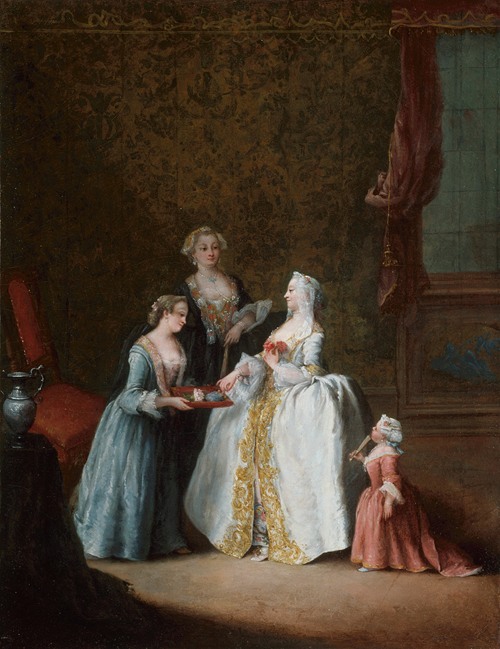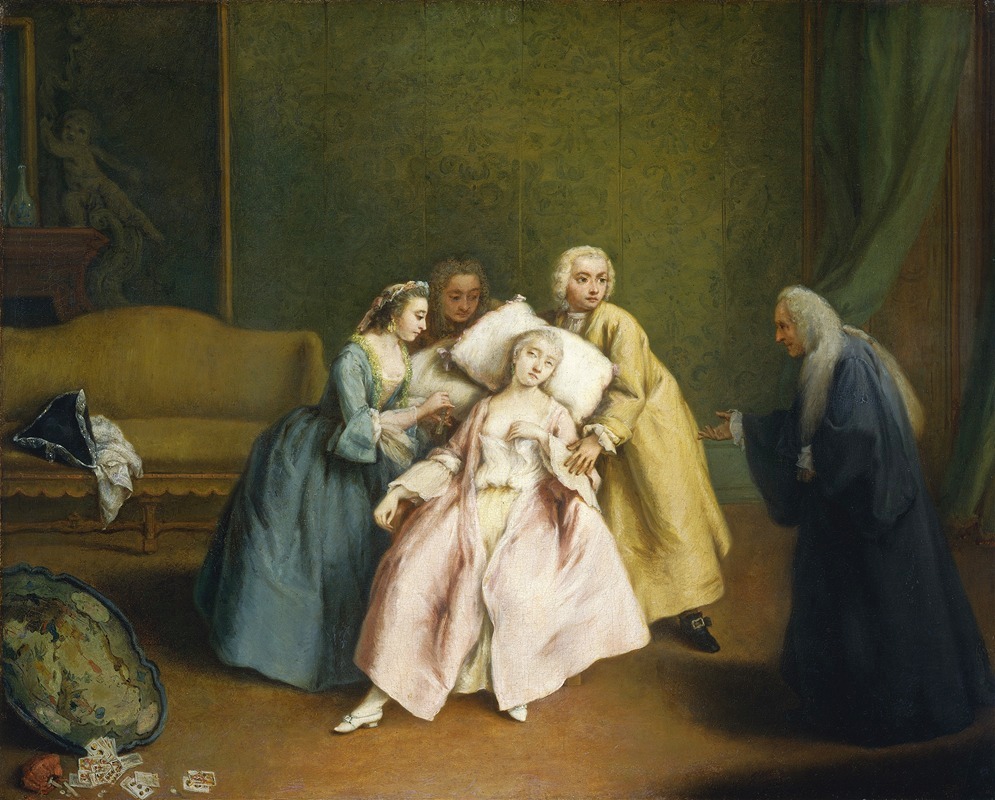

Pietro Longhi was a Venetian painter of contemporary genre scenes of life.
He was born in Venice in the parish of Saint Maria, first child of the silversmith Alessandro Falca and his wife, Antonia. He adopted the Longhi last name when he began to paint. He was initially taught by the Veronese painter Antonio Balestra, who then recommended the young painter to apprentice with the Bolognese Giuseppe Maria Crespi, who was highly regarded in his day for both religious and genre painting and was influenced by the work of Dutch painters. Longhi returned to Venice before 1732. He was married in 1732 to Caterina Maria Rizzi, by whom he had eleven children (only three of which reached the age of maturity).
Among his early paintings are some altarpieces and religious themes. His first major documented work was an altarpiece for the church of San Pellegrino in 1732. In 1734, he completed frescoes in the walls and ceiling of the hall in Ca' Sagredo, representing the Death of the giants. In the late 1730s, he began to specialize in the small-scale genre works that would lead him to be viewed in the future as the Venetian William Hogarth, painting subjects and events of everyday life in Venice. Longhi's gallant interior scenes reflect the 18th century's turn towards the private and the bourgeois, and were extremely popular.
Many of his paintings show Venetians at play, such as the depiction of the crowd of genteel citizens awkwardly gawking at a freakish Indian rhinoceros. This painting, on display at the National Gallery in London, chronicles Clara the rhinoceros brought to Europe in 1741 by a Dutch sea captain and impresario from Leyden, Douvemont van der Meer. This rhinoceros was exhibited in Venice in 1751. There are two versions of this painting, nearly identical except for the unmasked portraits of two men in Ca' Rezzonico version. Ultimately, there may be a punning joke to the painting, since the young man on the left holds aloft the sawed-off horn (metaphor for cuckoldry) of the animal. Perhaps this explains the difference between the unchaperoned women.
Other paintings chronicle the daily activities such as the gambling parlors (Ridotti) that proliferated in the 18th century. Nearly half of the figures in his genre paintings are faceless, hidden behind Venetian Carnival masks. In some, the insecure or naive posture and circumstance, the puppet-like delicacy of the persons, seem to suggest a satirical perspective of the artists toward his subjects. That this puppet-like quality was an intentional conceit on Longhi's part is attested by the skillful rendering of figures in his earlier history paintings and in his drawings. Longhi's many drawings, typically in black chalk or pencil heightened with white chalk on colored paper, were often done for their own sake, rather than as studies for paintings.
In the 1750s, Longhi—like Crespi before him—was commissioned to paint seven canvases documenting the seven Catholic sacraments. These are now in Pinacoteca Querini Stampalia along with his scenes from the hunt (Caccia).
From 1763 Longhi was Director of the Academy of Drawing and Carving. From this period, he began to work extensively with portraiture, and was actively assisted by his son, Alessandro. Longhi died on 8 May 1785, following a short illness.
